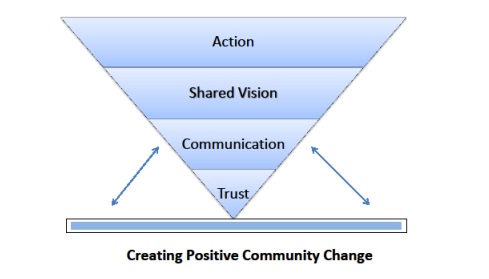Creating positive change in your community
To create positive change in a community, groups must move through an uncomfortable “groan zone” by building trust, communicating effectively, sharing a vision and moving to action.
There is a certain dynamic that occurs when a group of people decide or are forced to make a change and take action. Sam Kaner, author of the “Facilitator’s Guide to Participatory Decision-Making,” describes a change process where groups move from broad decision making -- what they want to accomplish -- to defining agreed upon goals or objectives. Between such divergent and convergent thinking lies an area Kaner refers to as the “groan zone.” It’s a place where some groups or individuals step off and never return. It is the uncomfortable space where conflict, uncertainty and frustration occur.
To create positive change in a community, groups can move through the "groan zone" by building trust, communicating effectively, sharing a vision and moving to action. The first and most important is the development of trust and cooperation.
Trust and Cooperation
Through a variety of interactions, community groups began to realize what they can expect from each other. Who does what they say they will? Who is open and thoughtful? Who is creative? Who will take the lead? If trust is established, greater cooperation occurs and people become more comfortable stating their opinions. The level and maintenance of trust then becomes a "tipping point" for creating positive community change.
Communication
Communication is necessary for successful group process. If there is an individual from the group who is holding back information or harboring a hidden agenda and the group cannot find a way to question and communicate these issues, the ability to create positive change begins to teeter and trust deteriorates. Skills aimed at strengthening leadership, team development, group facilitation and conflict management can help support constructive communication.
Shared Vision
Next is the ability to create a shared vision. The group has built trust, developed tools to communicate well and now they begin to create a shared vision; a vision that they can all rally around. Tensions that may have existed are reduced. The group begins to define clear outcomes, articulating specific goals and objectives.
Move to Action
Finally, the implementation stage begins. If trust becomes threatened, communication is not continued or the shared vision becomes distorted the goal or desired outcome of the group will suffer. Positive and sustainable community change requires a precarious balance of group dynamics as demonstrated in the illustration below.



 Print
Print Email
Email



